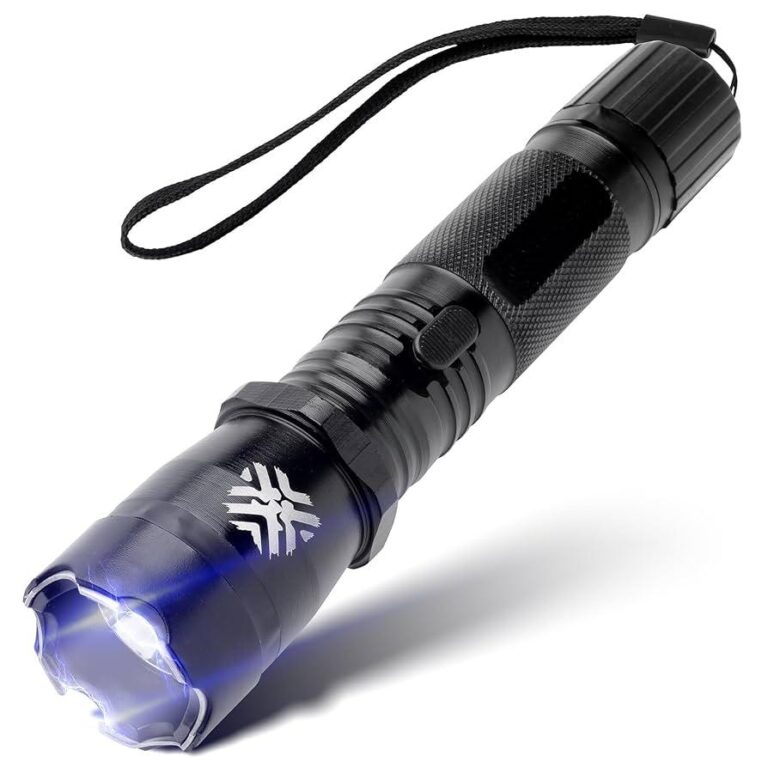Table of Contents
- Understanding Legal Boundaries for Stun Gun Use
- Recognizing Imminent Threats and Self-Defense Scenarios
- Best Practices for Safe and Responsible Stun Gun Usage
- Guidelines for Training and Handling to Prevent Misuse
- The Way Forward
Understanding Legal Boundaries for Stun Gun Use
Knowing the legal boundaries surrounding stun gun use is essential for responsible ownership and self-defense. Laws vary significantly by jurisdiction, but generally, these devices are permitted only for personal protection and must be employed strictly in situations where there is an immediate threat to safety. Using a stun gun beyond what is reasonably necessary, such as in retaliation or without clear justification, could lead to serious legal repercussions. Always check local regulations and understand restrictions such as age limits, permitted locations, and circumstances under which force can be applied.
Key guidelines to keep in mind include:
- Only discharge a stun gun when confronted with imminent harm or unlawful aggression.
- Avoid use in crowded or confined spaces where bystanders may be unintentionally affected.
- Never brandish or display a stun gun in a threatening manner to escalate conflicts.
- Comply with any mandatory registration or licensing requirements in your area.
- Understand that using a stun gun as a warning or intimidation without real danger is prohibited.
Recognizing Imminent Threats and Self-Defense Scenarios
Understanding when a threat becomes imminent is crucial for deciding the appropriate response, especially when it comes to self-defense tools like stun guns. An imminent threat is characterized by a clear and immediate risk to your safety, such as an attacker advancing with hostile intent or an assailant exhibiting aggressive behavior that leaves no room for escape. This level of threat demands swift recognition, as hesitation could jeopardize personal safety. Key indicators often include verbal threats, physical posturing, or direct attempts at close contact without provocation.
In these tense moments, it’s essential to remember that the use of a stun gun is justified under circumstances such as:
- Physical assault or attempted grabbing where de-escalation is impossible.
- Chasing or cornering scenarios where there is no safe avenue for retreat.
- Repeated threats or attacks indicating persistent danger to life or limb.
Being mentally prepared to assess and act upon these signals not only enhances personal security but ensures that any defensive measure taken, including deploying a stun gun, aligns with legal and ethical standpoint. Recognizing these scenarios helps you maintain control without crossing into unnecessary aggression.
Best Practices for Safe and Responsible Stun Gun Usage
When handling a stun gun, adhering to stringent safety guidelines is paramount to prevent unintended harm. Always ensure your device is fully charged and in proper working order before carrying it. Keep the stun gun in a secure, easily accessible location, such as a holster designed for quick draw, and never expose it to extreme temperatures or moisture. Remember, the primary goal is deterrence rather than injury-discharging the stun gun should only be done in true self-defense scenarios. Practicing control by familiarizing yourself with the activation mechanism not only boosts confidence but also reduces accidental discharge risks.
Consider these critical tips to enhance responsible use:
- Educate yourself on local laws and regulations regarding stun gun possession and deployment.
- Undergo professional training or simulations to understand appropriate response timing and pressure application.
- Avoid using the stun gun on vulnerable areas, such as the head or neck, to minimize the risk of severe injury.
- Regularly inspect the device for wear and replace batteries as recommended to maintain reliability.
Guidelines for Training and Handling to Prevent Misuse
Proper education on the responsible use of stun guns is crucial to ensure they are employed solely in justified defenses and never abused. Training should emphasize legal knowledge, ethical considerations, and practical skills. Users must understand when deploying a stun gun is appropriate-such as in situations that involve imminent physical threat-and more importantly, when it is not. Instruction should focus on recognizing escalation cues, de-escalation techniques, and the importance of proportional force, aligning with local laws to avoid misuse or unnecessary harm.
Incorporating hands-on practice with controlled scenarios helps build confidence and restraint. Effective training programs typically include:
- Simulated threat responses to develop decision-making under pressure.
- Maintenance and handling protocols to avoid accidental discharge.
- Post-use reporting procedures to ensure accountability.
These elements work together to cultivate a responsible mindset, reducing the risk of misuse and enhancing public safety by ensuring the stun gun remains a tool of last resort.
The Way Forward
In today’s world, understanding when the use of a stun gun is justified is crucial for personal safety and legal awareness. While these devices can offer an effective means of self-defense, their responsible and informed use is paramount. By recognizing key situations where deploying a stun gun is appropriate, individuals can protect themselves without crossing legal or ethical boundaries. Always remember to stay informed about local regulations and to prioritize de-escalation whenever possible. Stay safe and empowered with knowledge-because knowing when and how to act can make all the difference.Check Our Other Blogs
- StunGun – Your Trusted Source for Stun Guns, Laws, and Self-Defense Tips
- PepperSprayLaws – Your Trusted Resource for Pepper Spray Information
- StunGunLaws – Your Trusted Guide to Stun Gun Legality and Safety





